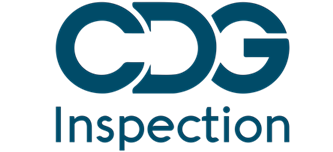In today’s globalized economy, supply chains have become increasingly complex and interlinked, spanning multiple regions and involving numerous stakeholders. This complexity presents significant challenges when it comes to maintaining the security and integrity of goods during transit. ISO 17712-certified security seals are a vital tool in safeguarding shipments against tampering, theft, and unauthorized access. To ensure the effectiveness of these seals throughout the entire supply chain, organizations must implement a comprehensive set of measures that address various stages of the logistics process.
1. Selecting Quality Seals:
The foundation of an effective security seal program begins with the selection of high-quality ISO 17712-certified seals. Organizations should work with reputable suppliers who provide seals that meet international standards for strength, durability, and tamper-evident features. This initial choice greatly influences the subsequent effectiveness of the seals.
2. Proper Seal Application:
Seals must be applied correctly to ensure they function as intended. This includes following manufacturer guidelines for placement and sealing methods. Proper training of personnel responsible for applying the seals is crucial to prevent any unintentional errors that could compromise their tamper-evident properties.
3. Documentation and Record-Keeping:
Maintaining a comprehensive record of seal numbers, dates of application, and relevant shipment details is essential. This documentation aids in accountability and traceability throughout the supply chain. Any discrepancies or incidents can be better investigated and resolved with accurate records in place.
4. Chain of Custody:
Establishing a clear and secure chain of custody is fundamental. Each party involved in the supply chain, from manufacturers to distributors to carriers, should have procedures in place to verify the seals’ integrity upon receipt. Regular inspections and documentation checks help ensure that the seals remain intact and have not been compromised.
5. Monitoring and Surveillance:
Utilizing technology like GPS tracking, IoT sensors, and surveillance cameras can enhance real-time monitoring of shipments. Any deviations from the planned route or unauthorized access can trigger alerts, enabling rapid response and recovery measures.
6. Secure Transit and Storage:
During transit, goods should be stored securely and protected from environmental factors that could compromise the seals’ integrity. Adequate packaging and loading techniques help prevent accidental seal breakage. Warehouses and storage facilities must also implement security measures to prevent unauthorized access.
7. Regular Inspections and Audits:
Conducting routine inspections and audits of seals and shipments is crucial. This ensures that seals are intact, and goods have not been tampered with. If any issues are detected, they can be promptly addressed, and potential vulnerabilities can be identified and mitigated.
8. Collaboration and Communication:
Open communication and collaboration among all stakeholders in the supply chain are vital. Sharing best practices, incidents, and lessons learned can help improve the overall security of the supply chain. This includes cooperation between manufacturers, shippers, carriers, and customers.
9. Response Plans:
Despite the best preventive measures, incidents can still occur. Organizations should have clear response plans in place to address instances of tampering, theft, or unauthorized access. These plans should outline steps for investigation, communication with relevant authorities, and recovery measures.
10. Continuous Improvement:
Supply chain security is an ongoing endeavor. Organizations should regularly assess their security measures, gather feedback from various stakeholders, and identify areas for improvement. Incorporating new technologies, refining procedures, and adapting to evolving threats are essential components of maintaining tamper-evident integrity.
Conclusion:
maintaining the tamper-evident integrity of ISO 17712-certified security seals across the entire supply chain requires a multifaceted approach that encompasses seal selection, proper application, documentation, monitoring, secure storage, collaboration, and continuous improvement. By implementing these measures and fostering a culture of security consciousness, organizations can significantly enhance the effectiveness of their security seal programs and protect their shipments from tampering and unauthorized access.












